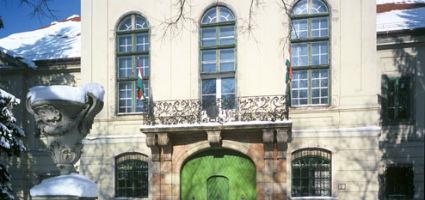2024. April 24. Wednesday
Ráday Castle - Pécel
 |
Address: 2119, Pécel Kálvin tér 1.
Phone number: (28) 453-354, (1) 202-6288
E-mail: huntrust@mag.hu
Opening hours: 01.05-30.10.: Fri-Sun 10-18
With guidance |
The Ráday family developed Pécel into one of the leading cultural centers of Hungary in the 18th century. The family members were different from the nobility in that they supported arts. They actively participated in public life. Many of the members were county or ecclesiastic officers.
The Ráday family acquired Pécel in 1705. The wife of Ráday Pál I. (1677-1733) received it as a dowry. The young Ráday joined the uprising of Rákóczi Ferenc II against the Habsburg. He became one of the most important advisors of Rákóczi, the leader of his propaganda and his personal secretary too. After the failure of the War of Independence, he withdrew into his land and lived only for his books. However, he continously represented his county Nógrád at Parliaments. After his mansion in Ludány was renovated, he had another one built in Pécel in 1722-1730. This U shaped one-storey building is now part of the castle now. His son, the literary man Ráday Gedeon I (1713-1792) supported young writes, poets and magazines.
He had the castle renovated in 1756-1777 and moved the family to Pécel for good. The Salzburg born Mayerhoffer András (1690-1777) and his son János made the designers of the renovations.
(Except from Bardi Terézia - Mrs. Wisnovszky Hajdi Márta: Historic Buildings under National Care 2004.)
The Ráday family acquired Pécel in 1705. The wife of Ráday Pál I. (1677-1733) received it as a dowry. The young Ráday joined the uprising of Rákóczi Ferenc II against the Habsburg. He became one of the most important advisors of Rákóczi, the leader of his propaganda and his personal secretary too. After the failure of the War of Independence, he withdrew into his land and lived only for his books. However, he continously represented his county Nógrád at Parliaments. After his mansion in Ludány was renovated, he had another one built in Pécel in 1722-1730. This U shaped one-storey building is now part of the castle now. His son, the literary man Ráday Gedeon I (1713-1792) supported young writes, poets and magazines.
He had the castle renovated in 1756-1777 and moved the family to Pécel for good. The Salzburg born Mayerhoffer András (1690-1777) and his son János made the designers of the renovations.
(Except from Bardi Terézia - Mrs. Wisnovszky Hajdi Márta: Historic Buildings under National Care 2004.)